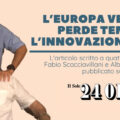Identifying and analyzing the systemic and structural problems is one, moving towards a solution is another. On an individual basis companies are grabbing hold of a quite a range of novel alternative approaches, mostly for high-end roles, often trying to address the subject of ‘general purpose’ in some way or another. But beyond that, something bizarre is happening. Taking my homeland The Netherlands as an example, while there are only some 9000 general practitioners, with 2340 inhabitants per, the number of motivational coaches has grown to nearly 50.000 while there are some 125.000 ‘advisors’. Adjusted to the active part of the national workforce, this gives one coach for every 147 workers and one advisor for every 59, those are external coaches and advisors, besides the nearly 750.000 managers. One out of every 10 workers is a manager. This is still somewhat reasonable as they usually reside on communication and control junctions in the organizational hierarchy. Although with ongoing automation towards direct management and flatter company structures the need for middle management is quickly disappearing and most of their activities will disappear into the automated enterprise fabric.
Yet, whereas employees are receiving a mix between psychotherapeutic treatment and personalized cheerleading with labels such as “career influencing”, “talent development” and “success management”, more than twice as often does the purchasing department deal with hiring processes and workforce management than Human Resources. This focus on the cost aspect has resulted in a race condition bringing down prices below the level where freelancers can still afford training and a pension plan, making them unfit for their next job, but it has also brought down the added value as well to an historical low and the initiators of some of the efforts have no idea how to reverse this. Five out of six freelancers rely on their personal network to avoid this situation, but as these are usually old co-workers this leads to pretty much the same kind of skill lock-in as for which they were thought redundant in the first place, plus it adds to an increased unwillingness to share opportunities. Enforcing a sort of ‘free market’ has a counterproductive effect. But this contradictory situation actually seems to be amplifying. Although still the norm, permanent jobs account for only 80% of all jobs and the number of temporary personnel and freelancers is growing. Of all labor contracts engaged in for 2011 only 3% were concerned with permanent jobs, and with the continuing crisis it doesn’t seem that this will improve. Eventually there are going to be more temporary workers than permanently employed, and it is not very likely their version of The American Dream involves rotating between temporary agencies, staffing services, supermarket chains and facility services, with or without a coach. Reminding people that wherever they go “they are always here and now” isn’t going to generate enough positive vibrations to materialize job-related success out of thin air, even if they have willpower in abundance to make “the law of attraction” stop its fixation on gravity for just a little while. This is just treating symptoms and avoids addressing the real causes.
Of course neither hardening a company’s policy by treating hiring as purchasing isn’t going to help in the long run, nor does fleeing into self-affirming collective narcissism going to fold any in-group favoritism inside out into a workable approach. These problems are too large for individuals alone, and should be addressed with solutions of a collective nature. There are better options that numbing down in the face of such challenges. Adopting a little more from Eastern cultures may help as well. To some extend the belief systems are animistic, everything is seen as having a life force in some form or another, including a business. Eventhough applied in a very pragmatic way Feng Shui is a widely often used form to steer ‘the forces’ but especially with the increased importance of the tasks humans perform, it serves best to act as if the company’s life force resides with the people involved. In a somewhat ironic twist of fate many of the novel alternative approaches do so as well.
In a fairly uncomplicated way this simply translates into the notion that people are employed to add value to a company, in whatever means and manner they are employed, rewarded, trusted, given independence, given responsibility and show loyalty. Based on this approach a radically different vision for future recruiting and employing is offered;
Digitization: For unstructured tasks, specialisms and expertise less defined human abilities such as creativity, intuition, social skills and attitude are increasingly important. Being human can be a key benefit in some jobs, for example with the Feldenkrais Method the therapist acts as a medical instrument.
Commodification: Companies are more and more composed of interchangeable services sourced in whatever manner is most suitable, making every company is a collaborative networked organization to some degree. For example manufacturing is already moving towards replacing assembly-line workers with a redundant array of cheap robotic modular parts which can wirelessly self-assemble.
Localization: People are increasingly organizing in cooperative communities, also in relation to employment, mentorship, education and entrepreneurship. Rather than setting up a purchasing company that tries to mold people into an on-demand workforce of temporary externals much more value lies in a form of share-sourcing among a consortium of companies so that someone can rotate between companies, jobs roles, and challenges. Such a hybrid organization will serve not only the role of a provider, but also a labor union, staffing agency, expert community, business park, schooling cooperative, guild and a shared workforce, which deals with education, mentorship and entrepreneurship for its members. Part of it can involve a crowd-funding network for pre-seed funding for those that desire to be an entrepreneur for a while. Instead of making such a clear but artificial distinction between contractor and permanent employee, it is much easier to work with different kinds of interim arrangements where someone can rotate between a select number of companies, jobs roles, challenges and even now and then try realizing their own dreams.
Qualification: Contemporary attempts to deal with reputation, using references, recommendations, reviews and ratings suffer from the same illusionary neutrality as degree qualification and do not account for any observer effect or personal bias. Using a degree as just a signpost indicating a minimum ability, a door opener with little practical use beyond that, more and more companies are adopting a much more flat, personal, informal, and consensus driven approach. Not neglecting many of our built-in in-group biases, the mostly context-dependent value of homogeneity and heterogeneity are made part of the matching process itself. Rather than hiding them in a priori requirements, open and transparent positive favoritism forms a proven and constructive meritocracy. How about all the nuances of branch and function specific expertise, on-the-job learning, self-education and all those people without a degree qualification who proved to excel in certain areas at their previous employer and who grew to a leading position because of hard work, demonstrated acumen, and natural ability and who are deemed unfit for mediation by recruitment agencies because they never got around to officialize their qualification with a degree? More and more research in human performance demonstrates we’re using inadequate performance indicators and sorts of certification. Another example concerns public education which was constructed to give people a general knowledge baseline as well as uniform norms and values, but its current format originates nearly two centuries ago in order to mass-produce a workforce for the industrial age, not to deal with the personalized growth paths of the knowledge worker 2.0.
Diversification: Teaching methodological meta-skills helps people embrace multiple career paths while allowing for deepening expertise and raising their level. As managerial functions largely disappear into the digitized enterprise workflow fabric due to de-intermediation and decentralized decision-making that can now involve all employees, a career path does not need to follow organizational hierarchy anymore. As groupware is evolving towards cross-company collaborative suites, with integrated learning solutions, wizard-driven procedures, automated story-boarding and smart assistants a novice can be guided through the on-boarding and in-sourcing stages and quickly ramp up while the learning process itself can provide valuable input for improvements.
Classification: With today’s computing capabilities self-learning evidence-based match-making to assemble a team or gauge someone’s ‘impact’ should be among the tools of a hiring manager. Rather than inadequate job descriptions event-simulation techniques can be used to test out the group dynamics and potential of a mix of different, real, profiles when these are matched up with the company and departmental culture and current goals. The illusionary simplicity of boxing in activities has given way for more biomimetic ways of task allocation and project management, similar to how military units coordinate their mutual activities via ‘swarming’. The assumption of an even workload distribution is the anomaly, not the norm. It is a lot easier to make a planning fit human activity than to have human activity fit the outline of a work breakdown structure’s box. Such 80-20 power law distribution should be made to good use on the road towards optimization, not sidestepped. If traffic behaves like this, why apply a method that is more appropriate for a freight train? While such unevenness is actually normal within team dynamics, many a project manager tries to avoid that a project’s success gravitates around one or two individuals, as this is seen as risky during the project execution phase. This in turn leads to the prevailing idea that high-performers aren’t good as team players, and once having fulfilled a leadership position they are most-often not hired with the argument that they will become bored easily and exhibit high turnover in the job.
Psychometric Normalization: To address the changing demands of modernity companies are becoming a facilitating confederation of whichever function it needs to reach its set of goals. Any organization and activity can be mapped out as part of a network organization which can manifest in any sort of hierarchical format, just not in an optimized way, yet. With such more flexible ways of organization and proven methods like “value networks” and “strategic alignment framework” evidence-based continuous event simulation can construct emergent hierarchies for a more transformative framework to measure general aptitude, conative drive, contextual-dependent attitude and the affective spectrum. If we want to optimize the utilitarian merit of human activity, instead of starting with assumptions, insight can be grown out a model-less pool of actual interrelations.
First Selection: Besides the job specification, the very first step in the selection process involves filtering out the profiles to continue the selection process with. With less than ten seconds per profile, the likelihood that after half an hour the top five best candidates do not end up in the resulting selection is probably 100%. Using answer engines a comprehensive label-free evidence-based recruiting framework can be used to interpret and possibly understand someone’s resume and online persona in terms of raw skills. It is worthwhile to assume that any specific person has evolved as the best answer to their own situation. The person being an invention of him- or herself. Taking the lessons of systematic invention methodologies as a basis, people’s knowledge, skills and abilities can be mapped out in a value network along with growth indicators, potential and attractors (like motivational drives, current interests and hobbies) so that someone’s potential can be measured as a more abstracted set of possibilities beyond the current specialisms. This is really the first issue that should be addressed. Offering this as a secured internet service to the hiring organizations should provide a first but immediate step in a highly needed improvement of recruitment.
Changing the landscape of recruitment and employment is not simple, but it is still very much doable. With a coherent approach eventhough many of the parts are believed to be inevitable evolutionary trends. It doesn’t have to be right immediately as in fact as an approach it should adapt and evolve along with our growing insight but we, as humans, can surely do a whole lot better than we have done thus far. Working out these novel approaches are likely prove to be highly worthwhile and personally satisfying, and I, for one, cannot wait to be part of it.
Share

















Lascia un commento